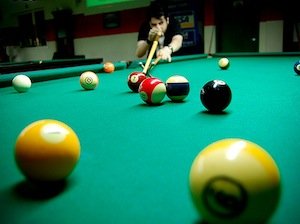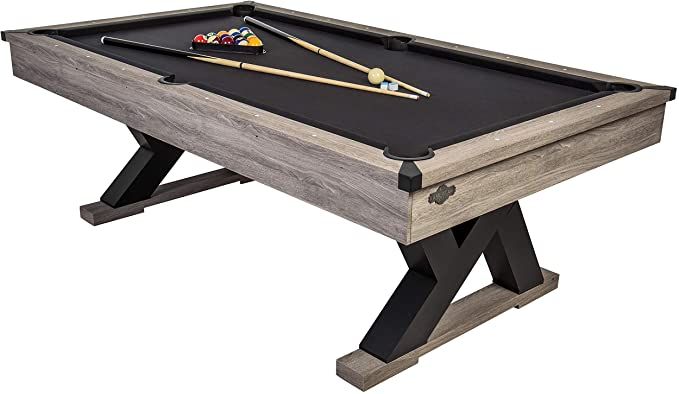
The game of pool is similar to croquet in many ways, but has its own unique equipment. The cue sticks are also made from wood. These are used for hitting a ball with a cue. But, in pool, the cue is more curvy than in billiard.
Carambola pool vs. billiards
Although carambola pool billiards look a lot like pool, they are quite different. Carambola can be played as an offensive game. However, pool requires good defense. It's played on a table that has three balls and a cuestick.
Billiards comes in many forms. The original version of the game was played on a green lawn in the 15th-century. The Union Mondiale de Billard (Union Mondiale de Billard), governs this competitive game. This governing body includes several smaller organizations such as the World Pool-Billiard Association and the Asian Pocket Billiard Union, along with the Billiard Congress of America and the European Pocket Billiard Federation.

Eight-ball pool
Eight-ball pool, a variation of billiards, is a game for two. You can play it alone or in a group of two. Each player will use a triangular tray and must place fifteen balls on the rack. These balls should not be in solids but in stripes. The eight ball must be in the middle.
Eight-ball pool, the most commonly played variant of billiards, is the most widely used. Other names for the game include stripes and solids and pocket billiards. However, eight ball pool shares the same objective regardless of the name: to hit all balls with a cup. But the rules and game mechanics differ. The international bodies that govern the eight-ball games include the World Pool Billiard Association (WPB), the European Blackball Association (EBA) and the World Eightball Pool Federation (W8BPF).
Pocket billiards and pool
Sometimes, the two table games pocket pool and pocket billiards are confused. These games are similar, but they differ in many ways. One major difference is the table size. The tables of pocket billiards are often larger than the tables on pool tables. Billiard balls are typically larger than pool balls. Additionally, billiards cues can be thicker or shorter.
Pocket billiards was originally a game played in the backrooms of pubs, where people could gamble on the outcome of games. By the 19th century, it became popular enough to be played in public parlors. In 1850, Michael Phelan published the first book on the game, and his articles and books fueled its popularity. The game has seen many ups and downs over the years, but it has always been a great game for serious players.

Cues used in billiards vs pool
Billiards, a game that uses a cuestick to play, is very popular. Players place their cue sticks on top of the green felt table to hit white cue ball with the stick. They want to put the balls in their pockets. The cues in pool and billiards share the same basic characteristics.
The shaft is the upper portion of a billiard cue. The shaft is a key component of the cue's playing and quality. Typical cues are made from wood, but some are made from plastic or other materials. The type of wood used for the shaft determines its quality and playing characteristics.